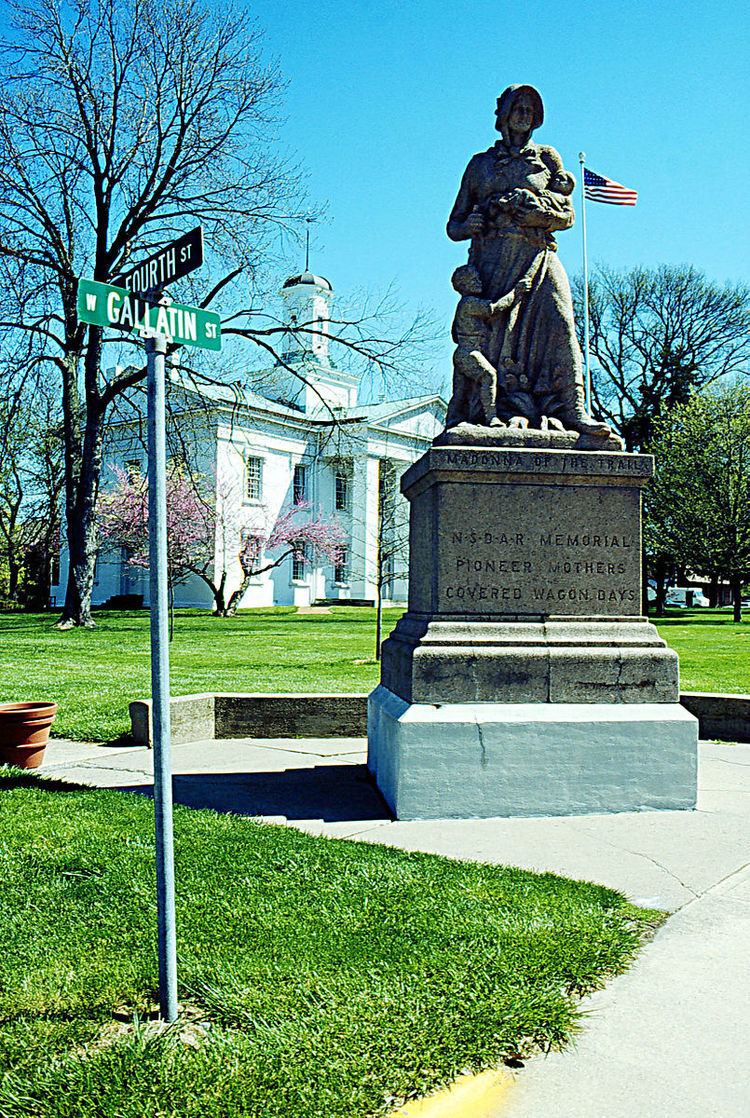Built 1836 Opened 1836 Phone +1 618-283-1161 | NRHP Reference # 74000760 Area 4,000 m² Added to NRHP 21 January 1974 | |
 | ||
Address 315 W Gallatin St, Vandalia, IL 62471, USA Similar Little Brick House, Kaskaskia Dragon, Bryant Cottage State Hist, Metamora Courthouse State Hist, Lincoln Log Cabin State Hist | ||
The Vandalia State House, built in 1836, is the fourth capitol building of the U.S. state of Illinois. It is also the oldest capitol building in Illinois to survive, as the first, second, and third capitol buildings have all disappeared. The brick Federal style state house has been operated by the state of Illinois as a monument of Illinois pioneer years since 1933. It is located in Vandalia, Illinois, on the National Road.
Contents
Earlier capitols
The Vandalia State House, Illinois's fourth capitol, was built when Illinois was in its eighteenth year as a state. Admitted to the Union in 1818, Illinois quickly abandoned its first governmental center of Kaskaskia, Illinois, and its capitol building (active in 1818-1820). A second "state house" was built of lumber at the new capital of Vandalia, but it burned to the ground after only three years (1820–1823).
The third capitol building (1824–1836), also built in Vandalia, was the scene of most of the service of Abraham Lincoln as a member of the Illinois state legislature. Lincoln did not, however, become a beloved figure in Vandalia. Elected from Sangamon County, closer to the geographic center of Illinois, Lincoln led a central Illinois caucus that called for the state government to move itself to the growing town of Springfield, Illinois.
As a result of this threat, Vandalia businessmen took action. In 1836, when the legislature was in recess, they abruptly tore down the third Capitol building and built a larger fourth one on the same public square. The cost of the new brick building was $16,000. Vandalia hoped that the new Vandalia State House would be so nice to work in that it would encourage the state government to remain in town.
The building the legislators entered in December 1836 did not have the front or rear portico. The cupola was octagonal and featured a rounded roofline. The brick building was not painted white. Legislators began the session upset by the presence of workmen and the odor of damp plaster.
Later capitols
When Lincoln and his colleagues returned to Vandalia in the fall of 1836, they saw a new "State House" waiting for them. They were not impressed. In February 1837, the legislature, under pressure from Lincoln and his colleagues, moved the governmental center to Springfield.
The fifth Illinois capitol, a Springfield building now called the Old State Capitol State Historic Site, served that purpose in 1839-1876. It was then replaced by the sixth and final Illinois State Capitol, which was occupied in 1876 and continues in operation today.
Vandalia State House
The state of Illinois gave the Vandalia State House (in operation in 1836-1839, only three years) to Vandalia's county, Fayette County, for use as the county courthouse. Porticoes were added to the courthouse in the late 1850s, which made the building a structure in the Greek Revival style. The building served as a courthouse between 1839 and 1933, when it reverted to the state.
In 1933, the old courthouse became the Vandalia State House State Memorial, and an extensive program of interior refitting and reconstruction began. In 1985 the building became a State Historic Site within the new Illinois Historic Preservation Agency, which maintains the old state house and interprets it to its brief time as Illinois's fourth capitol building in 1836-39. Guided tours are offered and visitors can also view the period rooms on their own.
